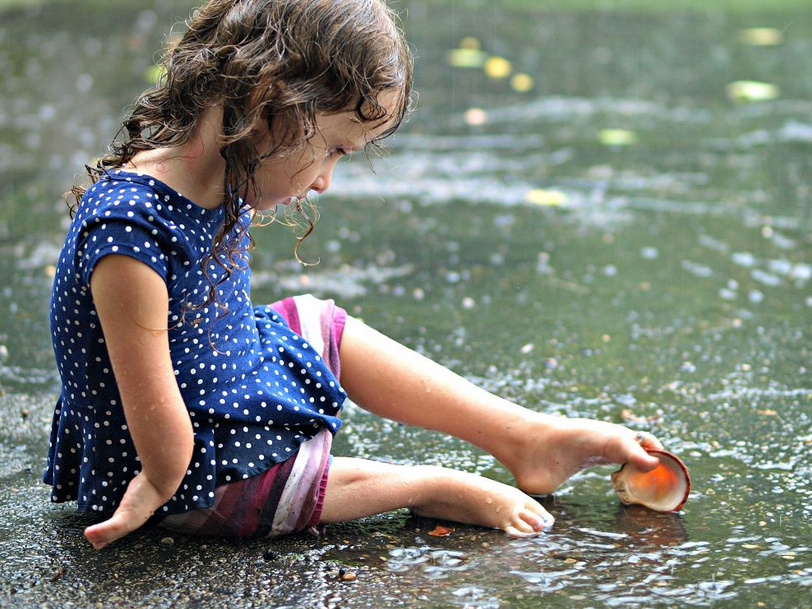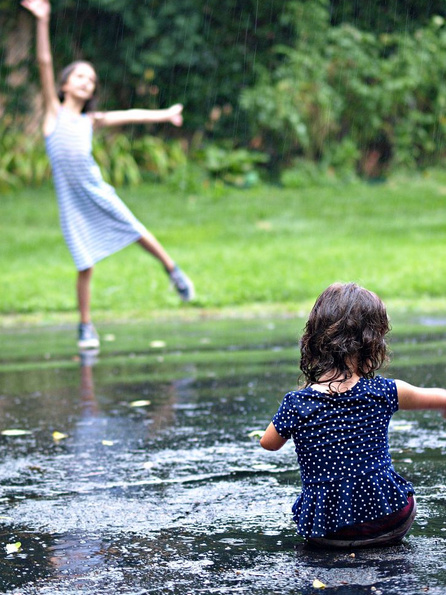Next week, my daughter, Lamp, starts kindergarten. This is both exciting and terrifying, as any mother likely understands. That being said, I think the nerves get turned up a few notches for us special needs moms. Not only am I trying to prepare Lamp for a new school and the beginning of her academic career, I’m also trying to help prepare her to deal with the extra challenges, both physically and socially, that she will face concerning her limb differences. Additionally, I’m helping to prepare and educate the school and other students about how to talk and interact with her.
One thing I’ve known for a while is that when Lamp started school, I wanted to do some sort of presentation on the first or second day that would address differences and disabilities to all the kids at her school. I wasn’t sure how or what this would look like, and I also didn’t know how open the school would be to having something like this happen, but I knew it would be important for both Lamp and her peers. With the help of Lamp’s therapists and pre-K teachers, we have a hospital representative coming to her new school to do a quick 10-minute presentation to each grade level telling them a little about Lamp — the correct terminology, her power chair, other tools she uses like special utensils and adaptive scissors as well as acceptable and unacceptable language/behavior. I can’t tell you how happy I am that the school was so receptive, because apparently some schools are not receptive to this type of educational experience.
Additionally this past week I was invited to come to the school’s staff meeting along with Lamp’s therapists and give them a quick rundown on Lamp, on how they can best help her (or not help her!) and especially in helping to navigate the other students and their reactions and questions concerning Lamp. Her teachers and therapists did most of the talking about how much or how little help she needs in class, what adaptions need to be made, etc. while I spent most of my time going over how I hope they, as educators, help Lamp’s classmates understand her disabilities as well as how to relate and talk to Lamp.
It has taken about five years for me to finally feel like I have a rough formula for talking to kids about Lamp. It’s not an exact science — every kid thinks and reacts differently — but for the most part, it works really well. This is what I shared with the teachers at Lamp’s new school, and I thought I’d share this for those of you wondering what to do when your child comes across a child with special needs and you’re not really sure how to handle it. Please note that this is mostly meant to be used with young children approximately 8 and under. Older children should hopefully start to know a little about boundaries, and I would not consider having this type of discussion with an older child (or adult) in front of Lamp appropriate.
1. Questions are OK.
The emotions a child feels when seeing or meeting another child with special needs can range from curious to nervous or scared to just plain confused. Let your child know that if they have a question it’s OK. Try not to shush them and turn them away from the child they just encountered — this only reinforces an exclusionary mentality. If your child points at Lamp and says “What happened to her arm!” my suggestion would be to get down on their level and have the whole “some people are born differently” conversation right then and there. Reference friends or relatives who have a wheelchair, walker, glasses, etc.
I know this is the hardest part because we think the kind thing is to shush our children and walk away. But walking away implies there is something wrong with kids with special needs and we don’t interact with them. So please, do your best to stay. Remember, Lamp knows she has limb differences — it doesn’t hurt her feelings to have it explained in front of her. What does hurt her feelings is having a rude interaction and then having that potential playmate taken away before things are set right, so to speak.
2. Reinforce kindness.
While it’s important not to shame kids for their curiosity, it’s also important to let children know in no uncertain terms that certain things are not OK. It’s not OK to point, stare, laugh, call names or use mean words. Even if your child does this innocently — “She’s weird!” or “Yuck! Why does her arm look like that?” — please correct them.
For example, “That’s not a nice word and that might hurt her feelings” or “That would really hurt your feelings if someone laughed at you.” It can be said kindly, it can be said firmly but it has to be said. Curiosity can quickly turn to cruelty in young children if left unchecked.
3. Find common ground.
Once your child has some understanding that some people are just born differently, it’s a great time to find some common ground. “She may be a little different, but she’s mostly the same as you. I bet she likes a lot of the same toys/games/food that you like.” You can then ask the child or the child’s caregiver what they like to do. Establishing this sameness is key. This is when the light goes on and children realize, “Oh, she’s just another kid like me.”
4. Emphasize strengths.
Now this one won’t be as easy to do if you don’t know the child with special needs personally, but as Lamp’s mom, I try to emphasize that she is differently-abled. Yes there are some things she can’t do, like walking, which is why she drives a power chair, but OMG, she can drive a chair! Or I always say, you want to know something really cool? Lamp can write with her feet! This is when you see the jaws drop — literally. Again, it’s super important for kids to understand from a young age that disabled really means differently-abled.
A couple notes: While I usually advocate for staying and building bridges, sometimes it is appropriate to walk away with your child. For example, if your child is really struggling to accept the idea that “they were just born that way” and they keep pointing, staring and saying innocently rude things, it’s a good idea to apologize and walk away to have a more in-depth conversation with your child out of earshot. Also keep in mind that, like most really important things in life, this isn’t a one-time conversation! Which is the main reason I don’t want children to feel shame for asking questions. If a child is shamed when they ask a question, they will soon learn not to ask questions. Which means they will lose out on really valuable lessons and conversations that need to take place.
So there it is! I know these can be hard situations to navigate, but for most of us special needs moms, just seeing you try and make an effort will mean a lot to us. And it will be meaningful for your children as well. Remember the end goal is to bring down the walls created by ignorance and social stigma and allow for real bonds to be formed. In a word, it’s about friendship. I really hope you take the time to read, share and implement this with your kids. I hope you share it with your friends and family, too.
Small things = big change.
We can do this!
If any other special needs moms want to chime in, I’d love to hear your thoughts, too!
Follow this journey on This Little Miggy Stayed Home.


